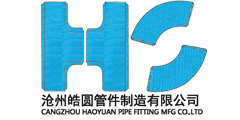Flange inspection procedures
Flange inspection procedures
First, the conventional flange inspection procedures
1. Purpose
In order to strengthen the quality management of forged flanges, the quality control mark before moving to the factory, specially formulated this requirement, as the forging flange in addition to the implementation of the contract technical annex and the contract design, manufacture, inspection and testing
Standards should also meet the requirements, and as a basis for factory inspection. Such as technical annex, the contract design, manufacturing and test standards, the conflict between the requirements, according to the higher requirements of the implementation.
2, the scope of application
This requirement applies to wafers that apply to a wide range of specifications. 3, the procurement of raw materials and re-inspection
3.1, all for the manufacture of forging flange raw material procurement channels must be identified to the supplier.
3.2, after the purchase of raw materials must be re-inspection, qualified before put into production. Check the project is not less than the following: 3.2.1, raw materials must have a quality certificate, the quality of the certificate must be completed according to the corresponding manufacturing standards complete, not missing items.
3.2.2, the quality of the certificate must be a one-to-one correspondence with the raw materials. 3.2.3, each batch of raw materials (with the specifications, with the material, with the furnace number, at the same time arrival) should be pumping not less than 1 chemical composition analysis and mechanical properties test. Material for the alloy steel or low temperature steel, in addition to pumping no less than one chemical composition analysis and mechanical properties of the test, the remaining part of the root by line for spectral analysis. The test results meet the corresponding standard requirements. 4, process control. 4.1, marking the transplant. The transfer of workpieces between processes (from the start of the cut) must strictly follow the marking of the transplant system: that is, the workpiece into the next process before the operation of the operator must be completed before the mark completely transplanted to the workpiece after the surface , Marking the contents of at least material, raw material furnace number. The next step of the workpiece with unclear markings should not be accepted. 4.2, forged flange blank heat treatment operation must be issued after the heat treatment report, and with the forging flange to the buyer. A variety of materials forging flange heat treatment process must not be less than the corresponding manufacturing standards, heat treatment after the flange is not allowed to cold work.
5, inspection and testing. Forged flanges should be shipped in accordance with the relevant norms, standards, technical conditions to complete all inspection and testing, inspection and test content should include at least but not limited to the following terms. 5.1, the flange of the finished product geometry, the appearance of piece by piece testing. 5.2, hardness test: all forging flange by piece hardness test, hardness should be consistent
JB4726 ~ JB4728-2000 standard requirements.
5.3, the carbon steel, alloy steel and stainless steel Ⅱ, Ⅲ, Ⅳ grade forging flange of the other properties of the test, according to JB4726 ~ JB4728-2000 standard provisions for testing.
5.4, to prevent mixing, for alloy steel, low temperature steel and stainless steel forging flange, in the factory before doing 100% quantitative spectral analysis.
6, product quality certification documents
6.1, with the species, with the specifications, with the material, with the material furnace number, while the arrival of a group, according to the batch issued by the quality certificate. The quality certification document consists of the following: cover information catalog, packing list, quality
Certificate, raw material certification documents, heat treatment test reports and curves, non-destructive testing reports, and arranged in this order. 6.2, product quality certification documents must follow the goods counterparts.
6.3. The product quality certificate shall be not less than the following: a. Manufacturer name and manufacturing date; b. Product name, specification, pressure grade, material, material manufacturing standard; c. Chemical composition and mechanical properties of raw materials; Raw material furnace number;
1
E. Heat treatment furnace number; f. Manufacturing lot number; g. Factory quality department of the official seal;
H. Signature and inspection date of quality inspector; I. Test results of product. 7, anti-corrosion, marking, packaging and transportation
7.1, anti-corrosion. All surfaces of carbon steel, alloy steel forged flanges shall be coated with anti-rust oil (paint).
7.2, forged flange logo. Carbon steel, alloy steel, low temperature steel used to make steel mark; stainless steel using electrolyte labeling. The label contains at least the number of manufacturing lot, the number of heat treatment furnace, the flange size (nominal diameter and pressure), the sealing surface type, the material grade, the forging grade, the manufacturing standard, the manufacturer code or trademark. The flanges used in the contract for the SHA class piping shall be marked with the words "SHA" in the product with a red paint. The degree of toxicity in the pipe is extremely hazardous. (Except benzene), the degree of toxicity is highly hazardous acrylonitrile, phosgene, carbon disulfide and hydrogen fluoride media, or design pressure greater than or equal to 10.0MPA medium pipe). 7.3, the product packaging 7.3.1, the flange of the sealing surface application of plastic protective cover to prevent damage to the sealing surface.
7.3.2, forged flange with wooden box packaging, packing box should have the product packing list, packing list content according to the relevant standards.
Second, high pressure hydrogen, high temperature, anti-hydrogen sulfide flange inspection procedures
1 material inspection
1.1 The material used to make the flange must have a quality certificate.
1.2 Forging material should meet the requirements of JB4726-28-2000.
1.3 Forged after the flange material should be carried out in response to the heat treatment, the surface should be smooth, no forging scars, cracks defects.
2 inspection of the material
2.1 Check if the material number on the process card matches the actual size.
2.2 Check the size of the inside and outside diameter of the flange with the ruler.
2.3 Check whether the marking of the flange after the transplant is completed.
2.4 inspection of splicing flange
2.4.1 Check the appearance quality of the weld groove with a visual inspection and check the geometrical dimensions of the weld groove with a weld angle. Visual inspection of weld appearance quality.
2.4.2 Ultrasonic inspection of the inherent quality of the weld, shall not have slag, cracks and other defects, and meet the relevant standards.
2.4.3 on the flange to eliminate stress heat treatment, check the heat treatment temperature and holding time and cooling methods.
3 size inspection
3.1 inspection with a caliper, straight ruler, depth caliper, tape measure.
3.2 Measure the following dimensions with caliper, ruler or tape measure:
Inner diameter, outside diameter, thickness, sealing surface diameter, flange neck, neck diameter, bolt hole center circle diameter, bolt hole
2
Spacing, bolt hole diameter.
3.3 Place the flange on the platform and measure the height of the flange with a depth caliper.
3.4 Checking the eccentricity of flange inner diameter to the center of the bolt hole and the center of the sealing surface.
A. Place the flange on the platform, measure the distance between the corresponding bolt hole and the inner wall of the flange with the caliper, and the corresponding
The large value is the amount of eccentricity.
B. Place the flange on the platform, measure the corresponding width of the sealing surface with the caliper, and the corresponding value in the corresponding difference is
Heart volume.
4 inspection of appearance quality
4.1 machined surfaces shall not have burrs, hazardous scratches and other defects that reduce flange strength and connection reliability.
4.2 The two sides of the ring groove sealing surface shall not have surface defects such as cracks, scratches and bruises caused by machining.
4.3 Flange surface roughness using the same material standard block for comparison.
Third, low temperature flange inspection procedures
1 material inspection
1.1 The material used to make the flange must have a quality certificate.
1.2 Forging material should meet the requirements of JB4726-28-2000.
1.3 Forged after the flange material should be carried out in response to the heat treatment, the surface should be smooth, no forging scars, cracks defects.
2 inspection of the material
2.1 Check if the material number on the process card matches the actual size.
2.2 Check the size of the inside and outside diameter of the flange with the ruler.
2.3 Check whether the marking of the flange after the transplant is completed.
2.4 inspection of splicing flange
2.4.1 Check the appearance quality of the weld groove with a visual inspection and check the geometrical dimensions of the weld groove with a weld angle. Visual inspection of weld appearance quality.
2.4.2 Ultrasonic inspection of the inherent quality of the weld, shall not have slag, cracks and other defects, and meet the relevant standards.
2.4.3 on the flange to eliminate stress heat treatment, check the heat treatment temperature and holding time and cooling methods.
3 size inspection
3.1 inspection with a caliper, straight ruler, depth caliper, tape measure.
3.2 Measure the following dimensions with caliper, bar ruler or tape measure:
Inner diameter, outer diameter, thickness, sealing surface diameter, flange neck, neck end diameter, bolt hole center
3
Circle diameter, bolt hole spacing, bolt hole diameter.
3.3 Place the flange on the platform and measure the height of the flange with a depth caliper.
3.4 Checking the eccentricity of flange inner diameter to the center of the bolt hole and the center of the sealing surface.
A. Place the flange on the platform, measure the distance between the corresponding bolt hole and the inner wall of the flange with the caliper, and the corresponding
The large value is the amount of eccentricity.
B. Place the flange on the platform, measure the corresponding width of the sealing surface with the caliper, and the corresponding value in the corresponding difference is
Heart volume.
4 inspection of appearance quality
4.1 machined surfaces shall not have burrs, hazardous scratches and other defects that reduce flange strength and connection reliability.
4.2 The two sides of the ring groove sealing surface shall not have surface defects such as cracks, scratches and bruises caused by machining.
4.3 Flange surface roughness using the same material standard block for comparison.





 Scan to visit
Scan to visit